Economic Policy Visualization
Income · Scales
May 8, 2023
Income inequality in economic policy
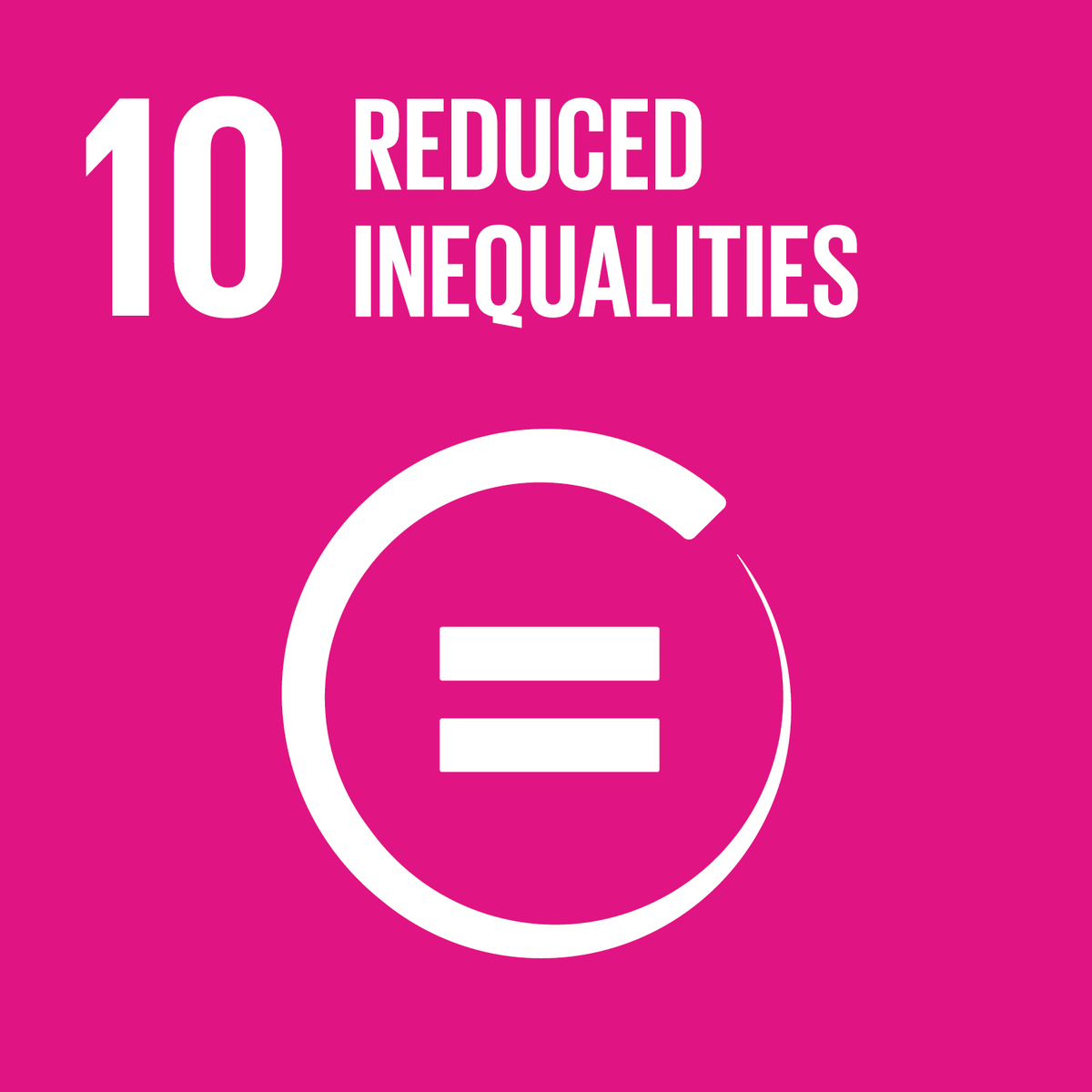
- UN SDG 10.1: “By 2030, progressively achieve and sustain income growth of the bottom 40 per cent of the population at a rate higher than the national average.”
- Economists focus on the economic origins and implications of inequality rather than the social and ecological context.
- In neoclassical economics, income inequality arises from differences in marginal productivity and might stimulate economic growth due to differential savings rates, investment, and incentives for effort (Josifidis/Supic, 2018).
- In (Post-)Keynesian economics, income inequality is the result of institutional settings, power relations, etc. Inequality harms economic growth in most of these models due to detrimental effects on aggregate demand (Kurz/Salvadori, 2010).
Functional distribution
Income accounts in the System of National Accounts show primary (from production) and secondary (from redistribution) income flows. It is also the base for functional distribution:
Gross domestic product (GDP) at market prices
\(+\) Primary incomes receivable from the rest of world
\(-\) Primary incomes payable to the rest of world
\(=\) Gross national income (GNI) at market prices
\(-\) Consumption of fixed capital
\(=\) Net national income at market prices
\(-\) Taxes on products
\(+\) Subsidies on products
\(=\) Net national income at factor cost
← Rest of World
← Depreciation
← Government
← Production factors
Income accounts for Austria, 2021
Wage share = Compensation of Employees / Net national income at factor cost
The wage share in Austria
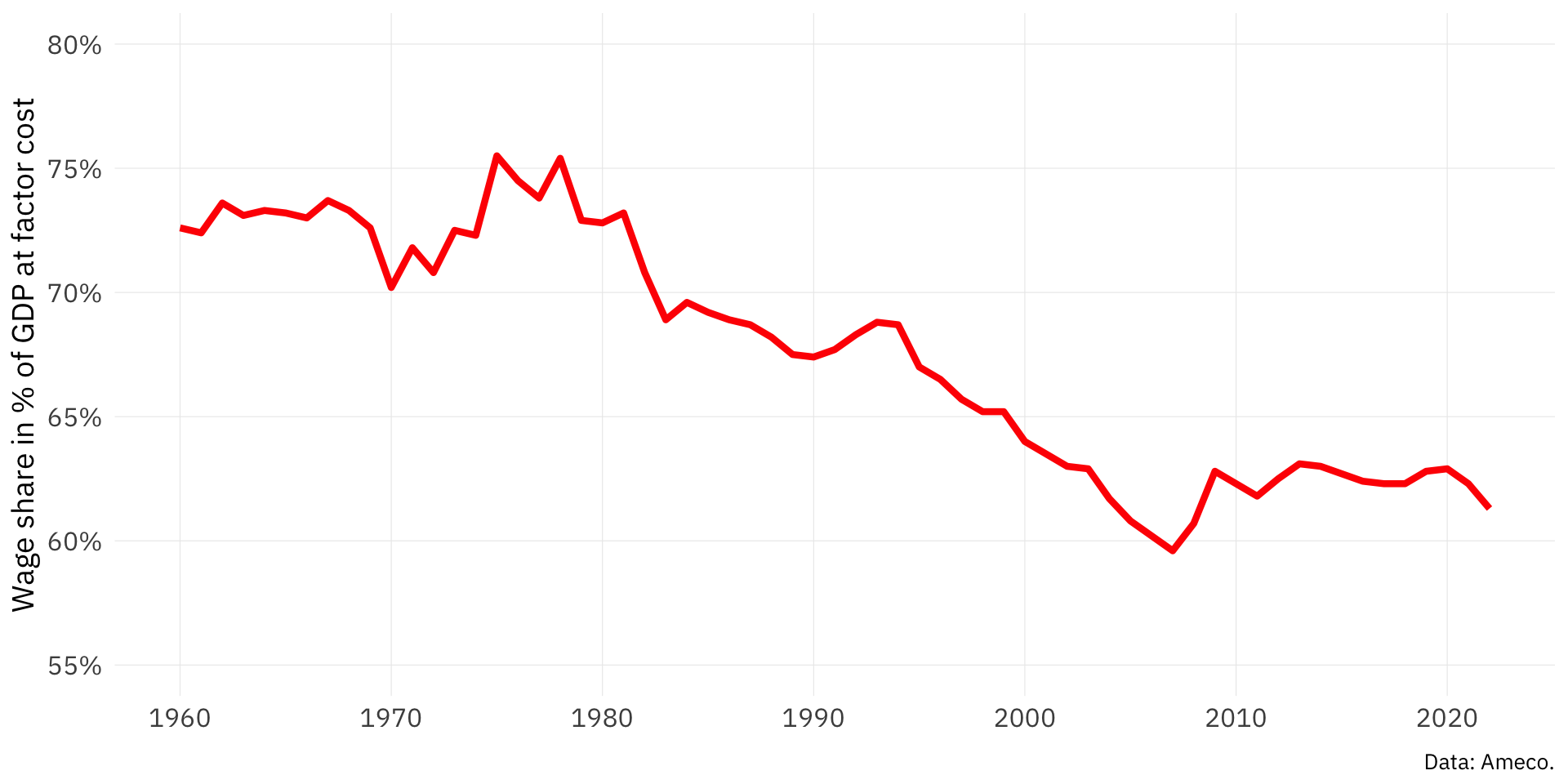
Functional income distribution in Continental Europe
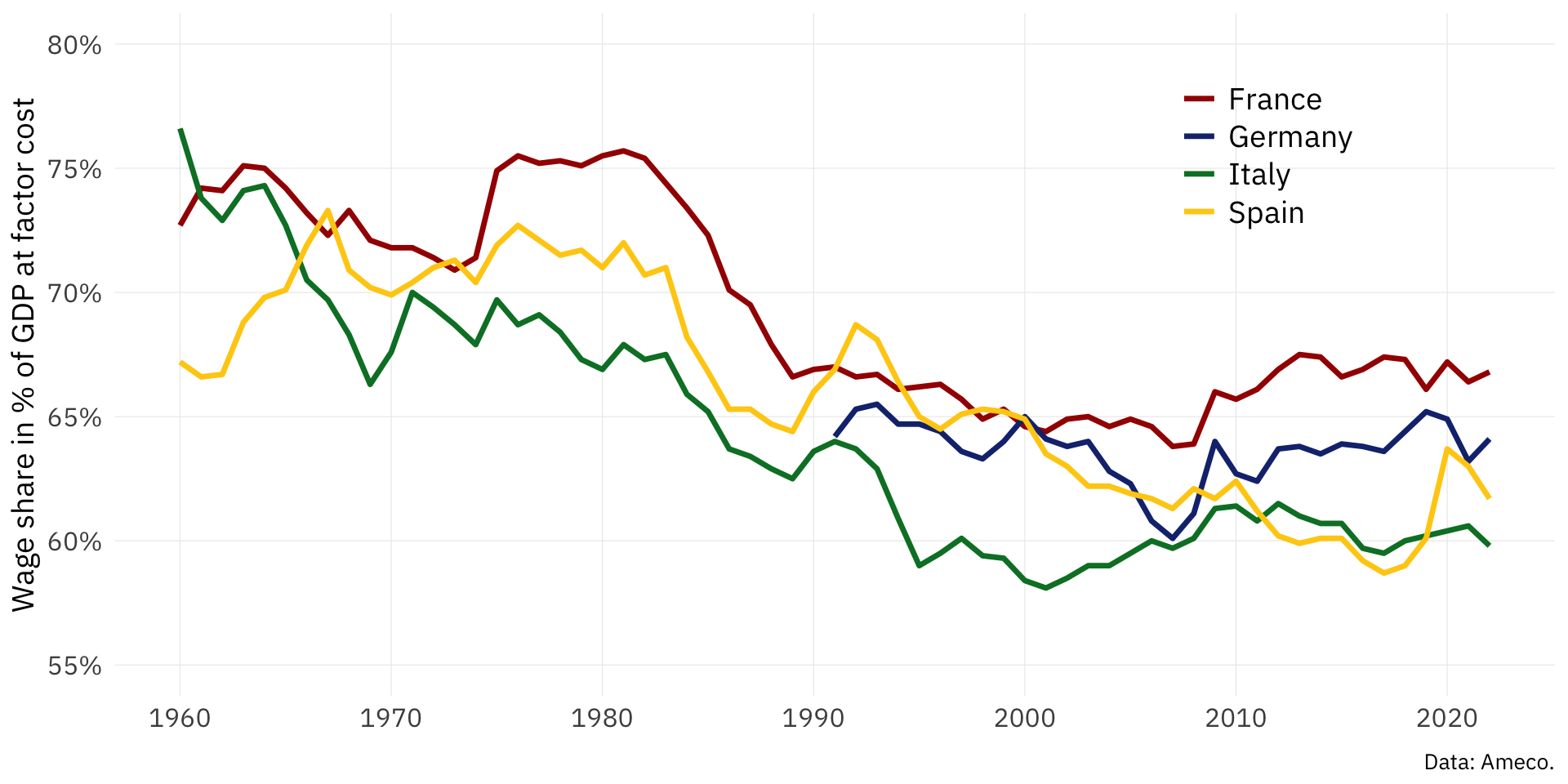
Functional distribution in Anglosaxon countries
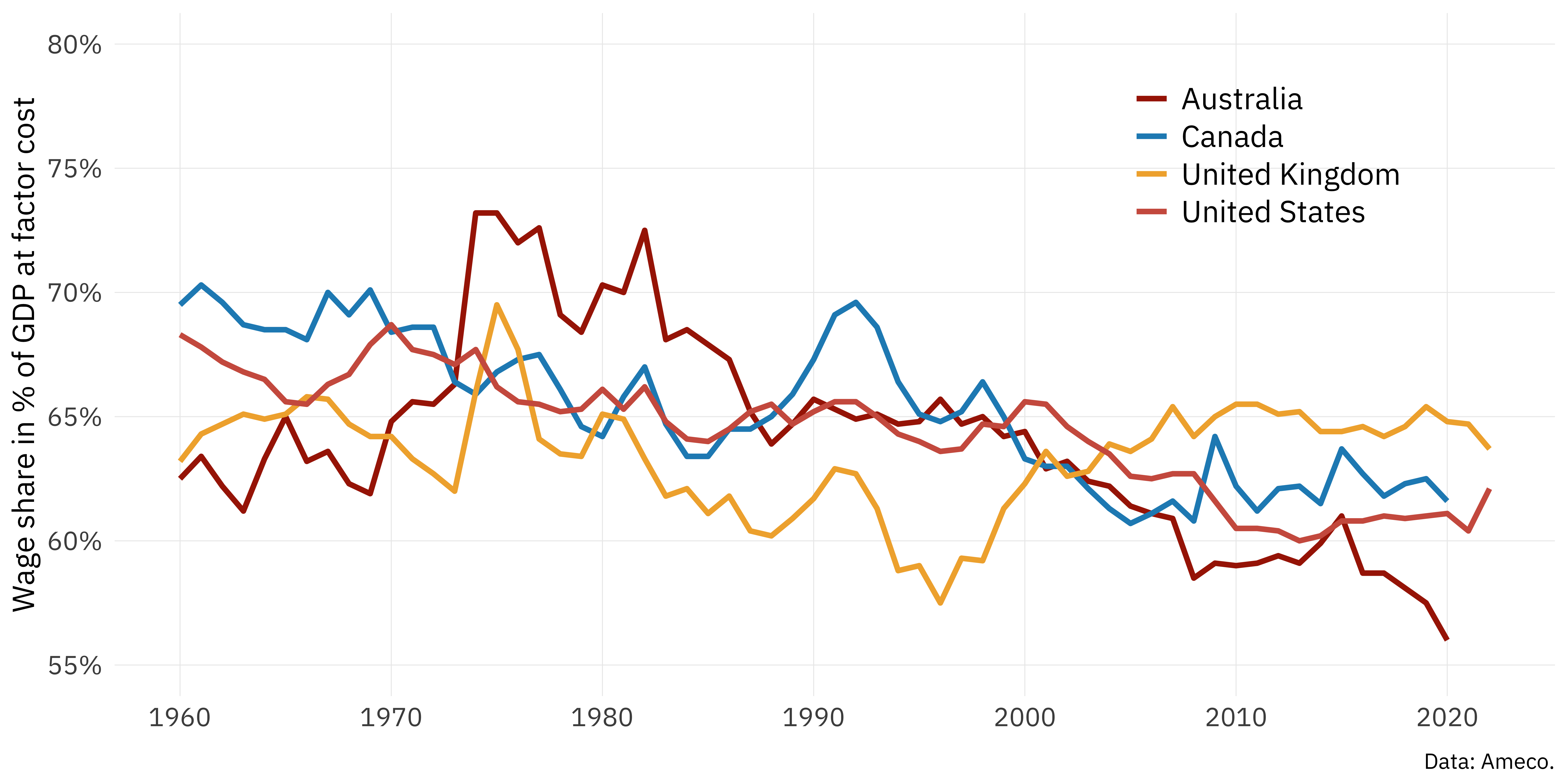
Factors influencing the wage share
- Labour market
- Organization (e.g. collective bargaining, workers councils)
- Leverage (e.g. unemployment rate, strength of unions)
- Product markets
- Globalization
- Technological change
- Politics
- Influence of capital income earners
Historical development of global personal inequality: 3 views



Global inequality 1820-2020
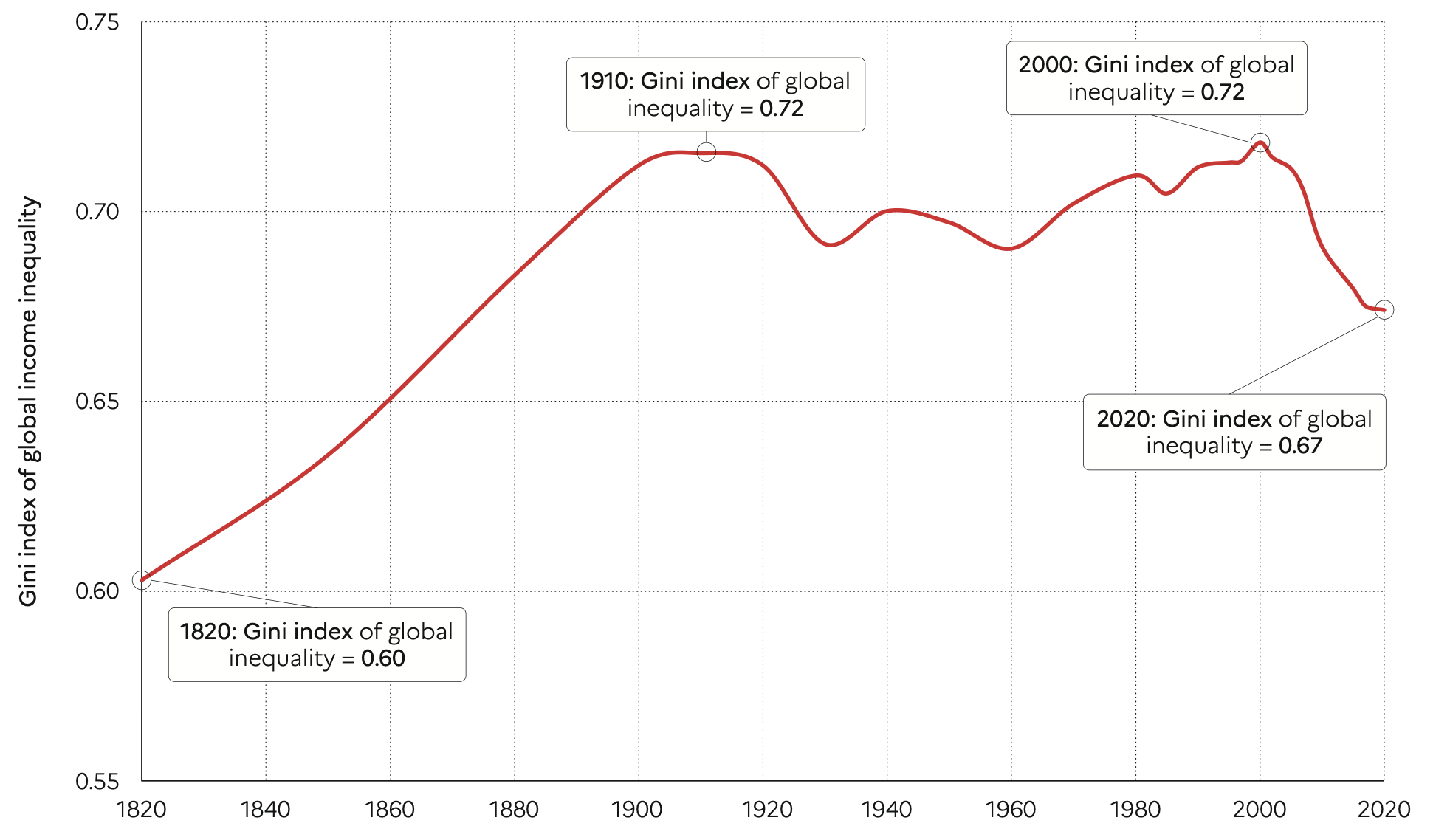
Decomposition of global inequality
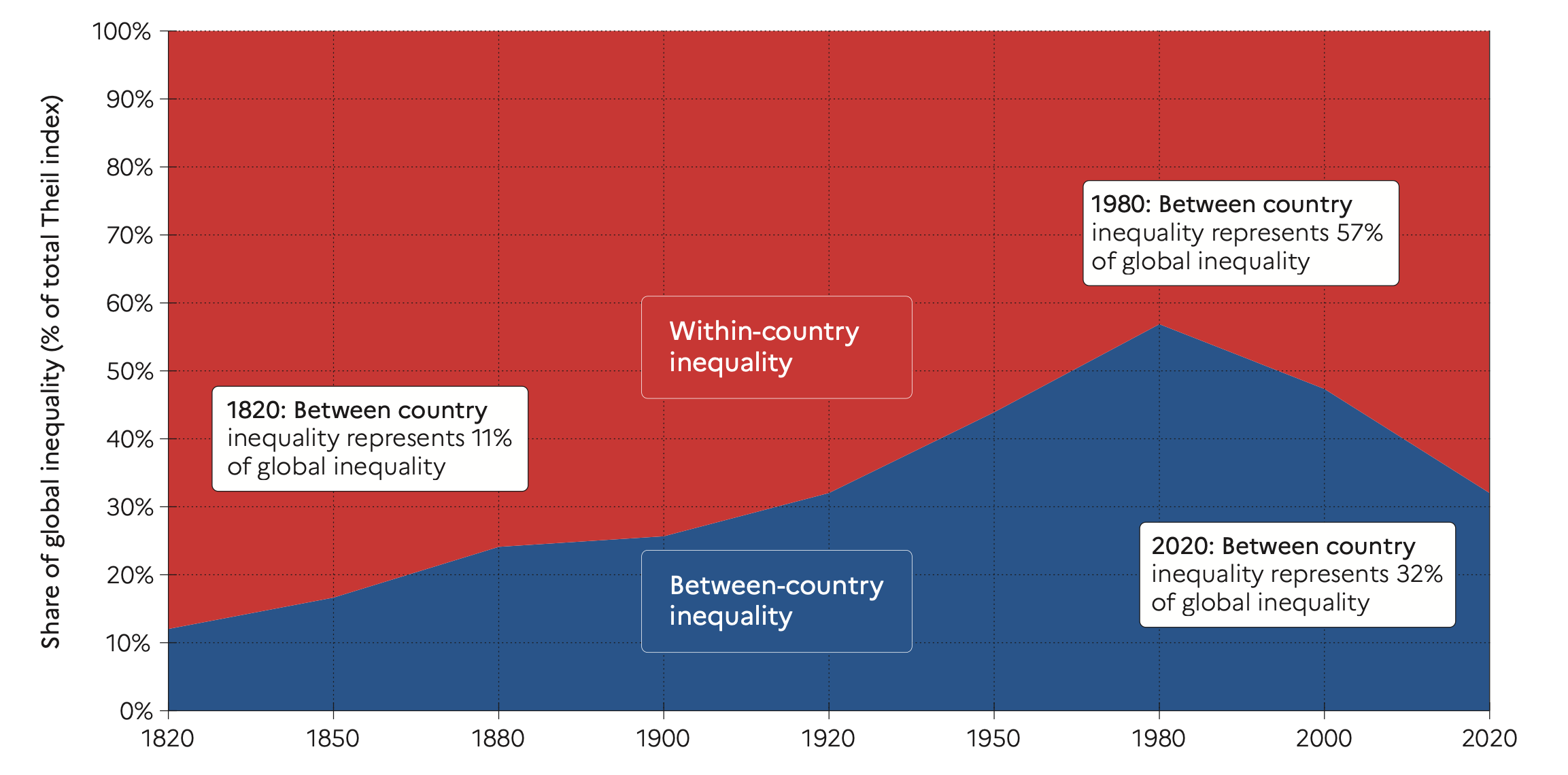
Disposable net income in Europe
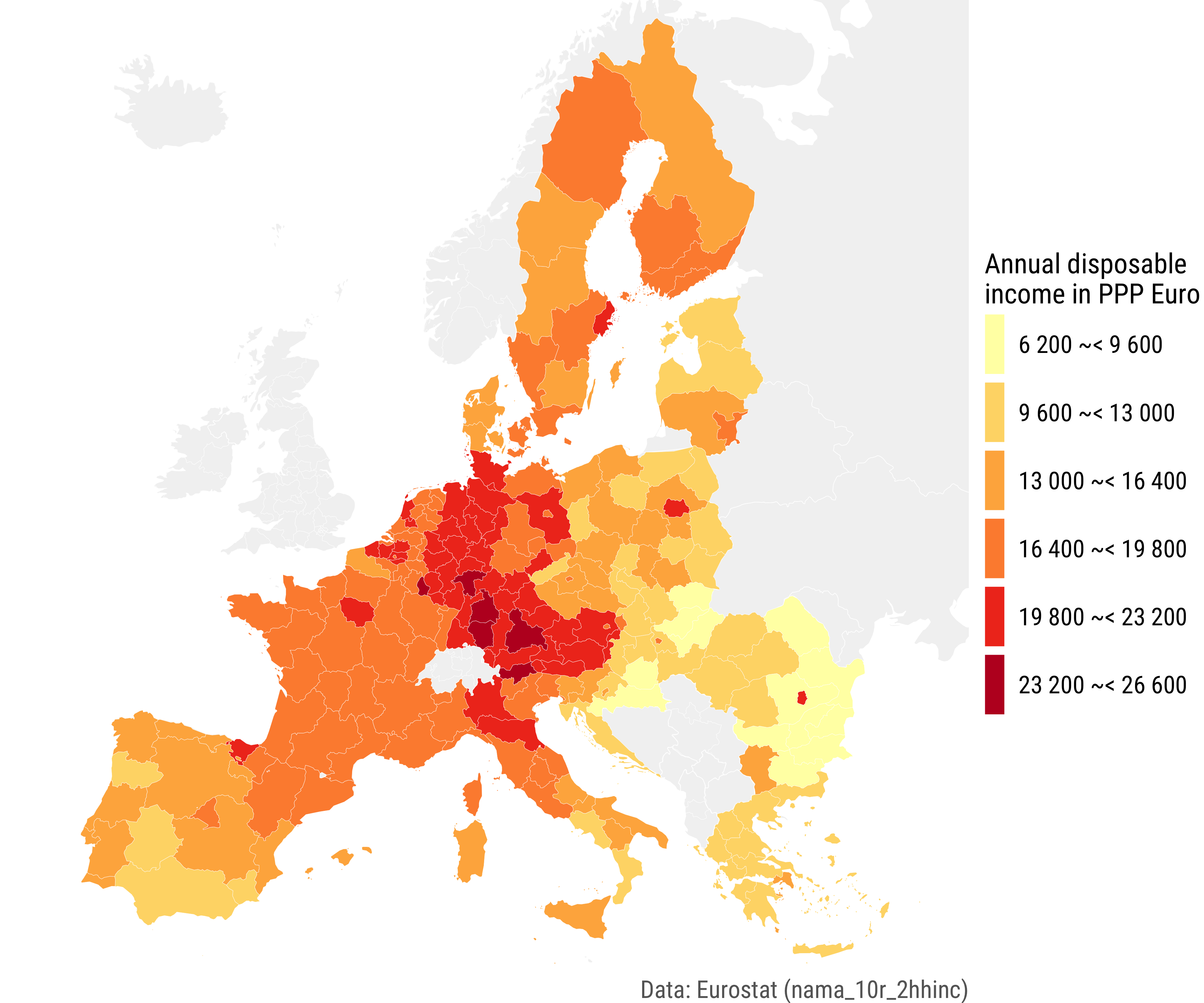
Scales

Axes
Continuous
Dates
Others
scale_x_log10(), scale_x_reverse(), scale_x_sqrt(), …
Colors
Manual
Gradient
Brewer
Others
scale_color_binned(), scale_color_distiller(), scale_color_grey(), …
Shape, size and alpha
tribble(~x, ~y, ~significance, ~gdp, ~continent,
0.5, 0.5, "yes", 140, "Asia",
1.0, 0.5, "yes", 100, "Africa",
1.5, 0.5, "no", 250, "Europe") |>
ggplot(aes(x = x, y = y)) +
geom_point(aes(alpha = significance, size = gdp, shape = continent)) +
scale_alpha_discrete(range = c(0.5, 1), guide = guide_none()) +
scale_size_continuous(range = c(5, 12), guide = guide_none()) +
scale_shape_manual(values = c(17, 19, 15),
guide = guide_legend(title = "Continent",
override.aes = list(size = 5))) +
theme_minimal()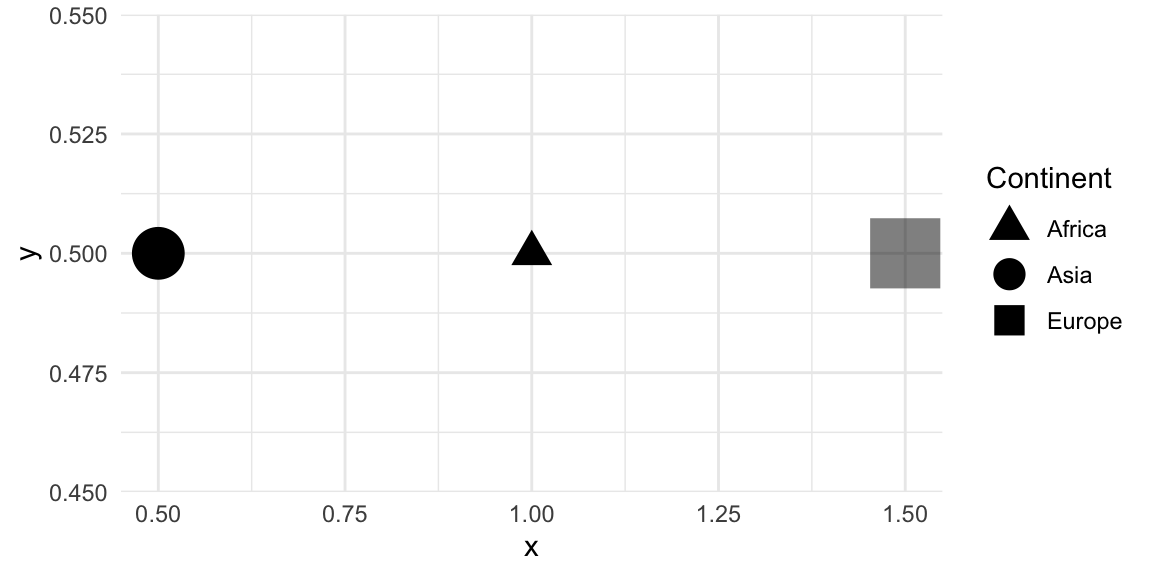
Guides
ggplot(aes(x = life_expectancy, y = poverty_rate, color = continent)) +
geom_point() +
scale_color_viridis_d(guide = guide_legend(title.position = "top",
title.theme = element_text(size = 2),
title.hjust = 0, title.vjust = 0.5,
label.position = "bottom",
label.hjust = 0, label.vjust = 0.5,
keywidth = 2, keyheight = 2,
direction = "horizontal",
override.aes = list(size = 4),
nrow = 1, ncol = 4,
byrow = FALSE, reverse = FALSE, ...))| Scale type | Default guide type |
|---|---|
| continuous scales for colour/fill aesthetics | colourbar |
| binned scales for colour/fill aesthetics | coloursteps |
| position scales (continuous, binned and discrete) | axis |
| discrete scales (except position scales) | legend |
| binned scales (except position/colour/fill scales) | bins |
Bibliography

PI 5620 Advanced Economic Policy | Summer term 2023